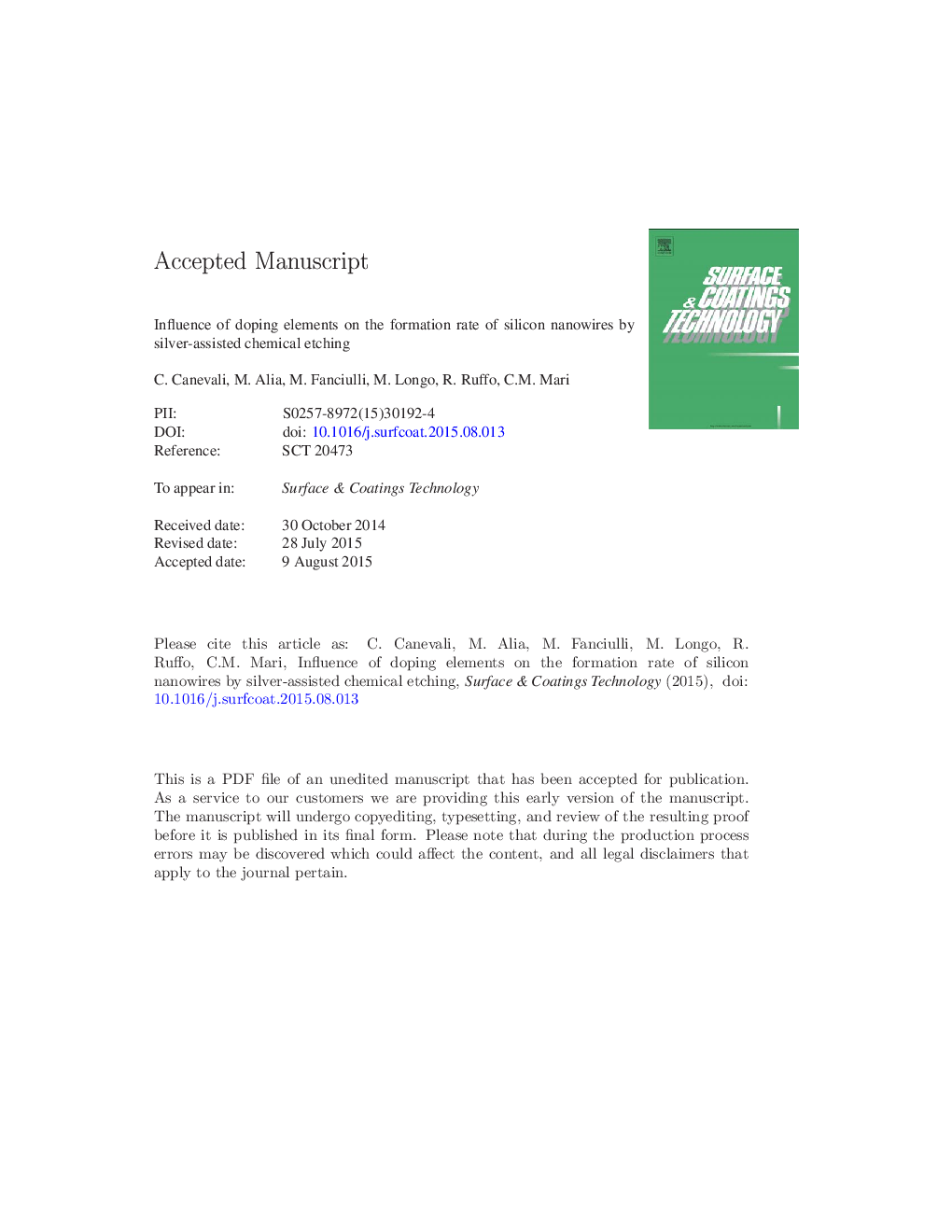| Article ID | Journal | Published Year | Pages | File Type |
|---|---|---|---|---|
| 8026016 | Surface and Coatings Technology | 2015 | 23 Pages |
Abstract
Metal-assisted chemical etching (MACE) has gained great interest for the preparation of vertically aligned silicon nanowires (SiNWs); however, the process mechanism has not yet been identified. In this study, the influence of doping elements on the formation rate of SiNWs prepared by silver-assisted chemical etching was investigated. Two n-type silicon substrates, bulk silicon and silicon-on-insulator (SOI) samples, containing different dopant concentrations (from 1011 to 1019 atoms cmâ 3) and species (phosphorous and arsenic), were considered. The SiNW formation rates increase with dopant concentration and are influenced by the dopant species. The use of SOI samples allowed highlighting the remarkable loss of the starting device layer in conventional process conditions, never previously observed; such occurrence limits the most achievable SiNW length. The study of the gas evolution both from bulk and SOI samples allowed for the first time the in situ H2 detection as well as to identify one definite overall process reaction.
Related Topics
Physical Sciences and Engineering
Materials Science
Nanotechnology
Authors
C. Canevali, M. Alia, M. Fanciulli, M. Longo, R. Ruffo, C.M. Mari,
